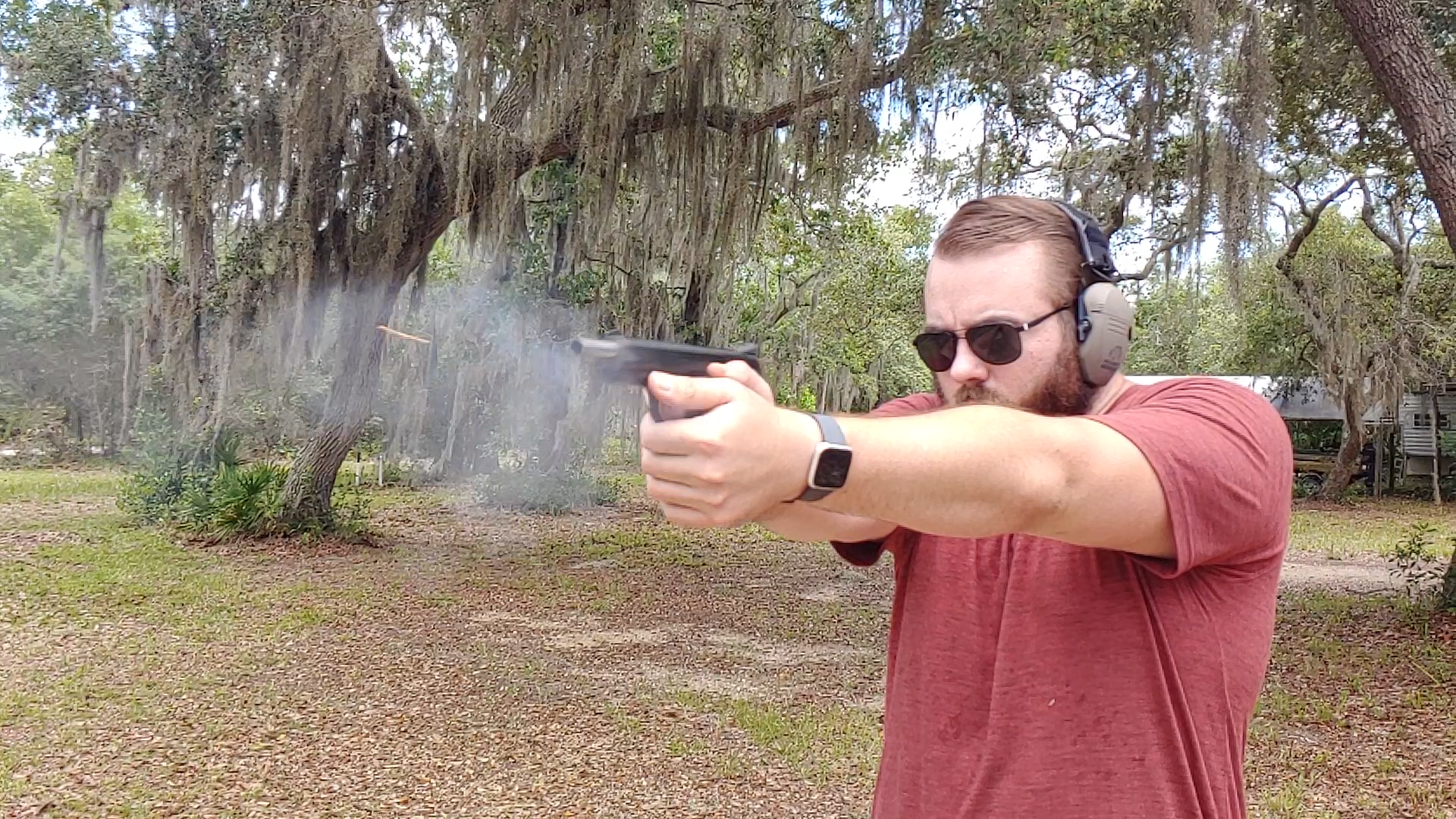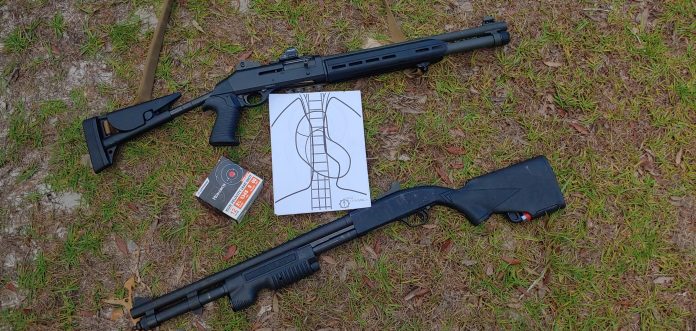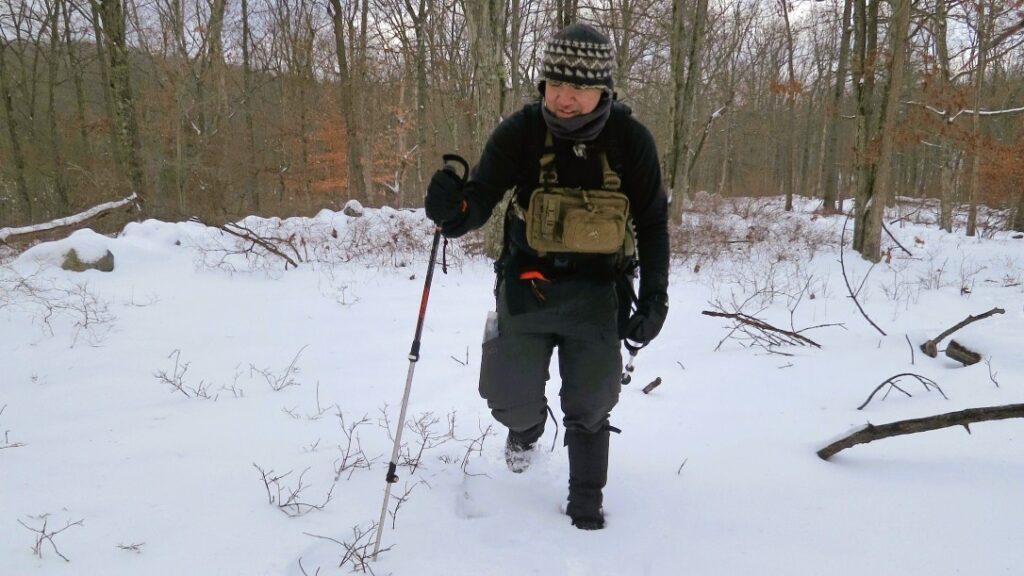Cheaper than Dirt is currently hawking 9mm Tulammo for 40 dollars for a box of 50. We might be in a global pandemic, but we are also in a worldwide ammo panic. Yet, training cannot cease boys and girls. So what are we to do?
If you have an ammo stash, you don’t want to blow through it, so your focus should be on low round count drills. With that in mind, I gathered five of my favorite low round count training drills. The intent with each is to provide a drill that uses a single 50 round box of ammo at the most while providing you an outstanding level of training. We aren’t breaking the bank to build skills here.
Dot Torture
Dot Torture is the first drill on this list because it’s one of the most effective. You’ll need the free printable target that incorporates a wide variety of different skills. The dots are small and require proper shot placement and excellent fundamentals. Rounds required are a mere 50, and inside that 50 rounds, you get a heavy dose of practical and useful training.
Advertisement — Continue Reading Below
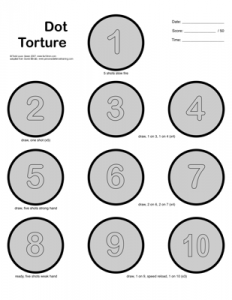
Dot torture covers a variety of skills, including drawing, target transitions, reloads, and more. This drill does require you to have two magazines, a magazine pouch, and a holster on top of those 50 rounds.
The drills have no time limit, and I like to use this as a slow skill builder that you build speed into. Start slow on your first try, or even dry fire it. Speed will come with proficiency. Dot torture is one of my favorites and a staple of my at-home training regiment.
Advertisement — Continue Reading Below
Sage Dynamics Eleanor Drill
If you want to be humbled, then the Eleanor drill is for you. Designed by Aaron Cowan at Sage Dynamics, the Eleanor drill is intended for both rifles and handguns. It only requires four rounds per run.
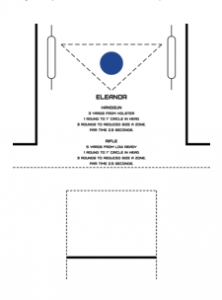
Advertisement — Continue Reading Below
The target is free and can be printed from Sage Dynamic’s website. The Eleanor drill is fired from 3 yards for a handgun and 5 yards with a rifle. It requires you to place one well-aimed shot to a 1-inch dot from the draw with a handgun and from the low ready with a rifle, and then three rapid-fire shots to a reduced size A zone.
Par time is 2.5 seconds. You gotta be fast and accurate. Both are keys to winning a gunfight, and this drill will push you. It will humble you, and you’ll know right away if you haven’t been practicing. It’ll also show you why a proper presentation is essential, and how much faster red dot sights can make you.
A low round count doesn’t necessarily mean an easy drill.
Advertisement — Continue Reading Below
SlyTac Casino Drill
I learned this drill from Active Response Training, but Tom Givens initially invented it. His original exercise does require a much larger target, and they can be expensive. A company called SlyTac produces a printable version of the target that allows for a more affordable option.
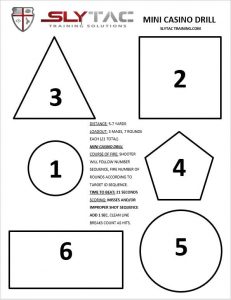
Each run requires 21 rounds of ammo and can be done with a rifle or a pistol. The Drill begins with a holstered handgun or a low ready rifle. The shooter then shoots the numbered targets in the corresponding order, delivering one round to number one, two to two, etc. The target can be used in reverse as well. Regardless of how it’s used, you reload along the way, and one way to spice up training is to mix up magazine capacities.
Advertisement — Continue Reading Below
I even ran a drill in which I ran both rifle and handgun, dropping the rifle after three targets and shooting the rest with the handgun. Creativity can always increase your training potential. The low round count nature means you can shoot it twice per single box of ammo with a few rounds left over.
iHack
The iHack is a modification of the Hackathorn headshot standards designed for indoor gun ranges. The target is printable and consists of three small circles. Each circle is spaced slightly apart from one another, and the range is typically fired from 3 to 5 yards.
The drill is broken up into three different rounds. Each round requires three shots and has a par time of three seconds. The exercise starts with the shooter firing from any position, and since most ranges don’t allow for a low ready stance, you can begin at the ready.
Advertisement — Continue Reading Below

Starting from left to right on the go signal, the shooter fires a single round into each circle. Round two starts from right to left, and the final drill starts in the middle and is dealer’s choice for whether you take the left or right target out next.
Any shots over three seconds are misses, and you need a 7 out of 9 to pass the drill. This is moderately difficult, but most shooters can accomplish it. I use it as a warm-up due to its low round count and low maintenance targets.
Advertisement — Continue Reading Below
MPTC Backup Gun Qualification
If you have the space and range required, you can commit to a full-on qualification from the Massachusetts Municipal Police Training Committee for backup guns and concealed carry pieces. This course requires only 50 rounds and a handgun, but you’ll also need:
- Holster.
- 2 Magazines (or Revolver speedloader/strip)
- Spare Mag Carrier
- 1 Man-Sized Target
- Some form of ‘cover’
A passing score is only 40 hits, and the drill is rather simple.
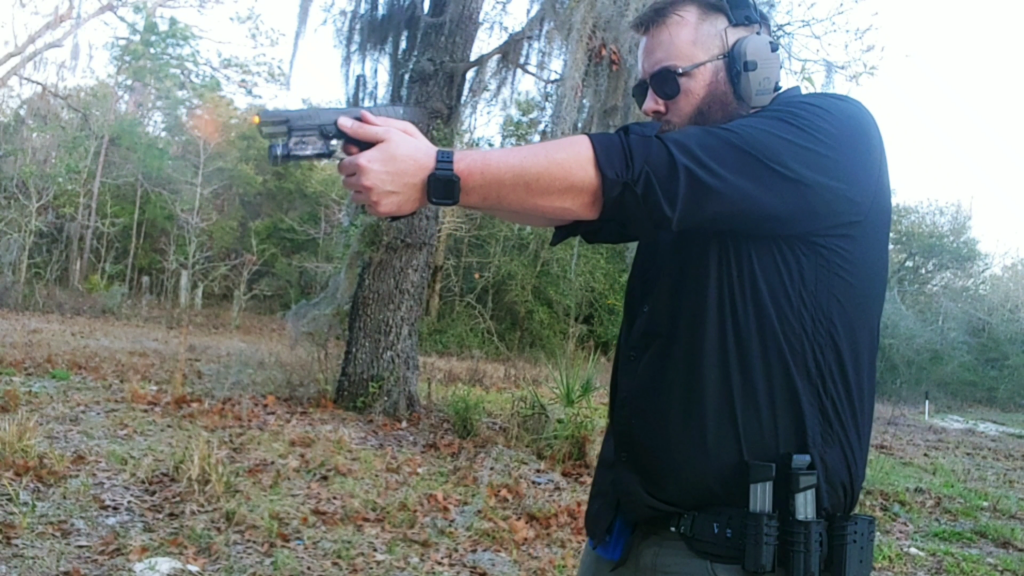
Advertisement — Continue Reading Below
However, there is lots of drawing, using cover, and other fun stuff. At only 50 rounds per run, why not give it a try and have some fun with it. Here is how the drill is run:
STAGES OF FIRE
7 yards 5 rounds (x2) 15 seconds
This stage will be shot in two phases from behind cover (if available). Shooters will load five rounds and have five rounds in a spare magazine or speed loader/speed strip. On the command to fire, the shooter will drop to a knee and draw from the holster and fire five rounds from the strong side of cover.
Reload, scan, and recover to a standing position at the “low ready” position. On the next command to fire, the shooter will drop to a knee and draw from the holster and fire five rounds from the support side of cover.
Scan, reload, and recover to the holster. Shooters using revolvers are given three additional seconds to reload. The total time for each phase is 15 seconds.
5 yards 5 rounds (x2) 10 seconds
This stage will be shot in two phases. The shooter will start from the 3-yard line. On the command of threat, the shooter will move back to cover on the 5-yard line, drop to a knee and draw and fire five rounds, strong hand only, reload, scan, and recover to the holster.
This phase is repeated once more. Shooters using revolvers are given three additional seconds to reload. The total time for each phase is 10 seconds.
5 yards 5 rounds (x2) 5 seconds
This stage begins with the shooter facing away from the threat (target). On the command to fire, the shooter will pivot to address the threat, draw from concealment and fire five rounds in 5 seconds.
Reload immediately. Scan for additional threats. On the second command to fire, the shooter will fire five additional rounds at their target.
3 yards 5 rounds (x2) 10 seconds
On the command of deadly threat, the shooter will draw and fire five rounds with the dominant hand only. Reload, scan, and recover to the low ready / gun ready position.
On command, the shooter will transition their weapon to their support hand. On the next deadly threat command, fire five rounds (support hand only). Scan and recover back to the holster. The total time for each phase is 10 seconds.
1 Yard 5 rounds 4 seconds
This stage will simulate a close in immediate threat. Shooters start with their weapon holstered. On the command to fire, they will perform a defensive tactic/distraction technique, step back while drawing their weapon and fire two rounds strong hand only.
Scan, cover the threat, and reload if necessary. On the next command to fire, the shooter will fire a failure drill (3 rounds) using the same procedure. The total time for each phase is 4 seconds. Reloading will not be included in the timing for the shooter’s safety.
Contact Distance 5 rounds UNTIMED
Shooters will start from an interview stance. On the command to fire, the shooter will take one step in the direction given by the instructor, either left, right or to the rear, draw and fire three rounds, scan and recover back to the holster. Repeat a second time with two rounds fired.
As you can see, it’s simple but has some moving parts, and range considerations are heavy. It is fun and has a low round count.
Low Round Count Training
Dry fire and air gun training is great, but will only take you so far. You’ll need to get some real live-fire shooting in. At the same time, you want to keep the round count low, so you don’t kill your ammo stash. In a time of global pandemic and civil uncertainty that ammo stash might come in handy, but skills sharpening is just as valuable. The above drills strike a brilliant balance between actual skill-building and ammo conservation.
